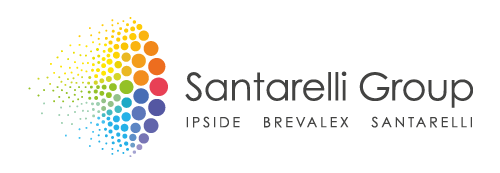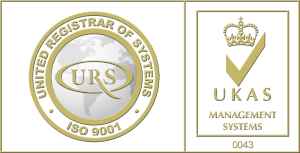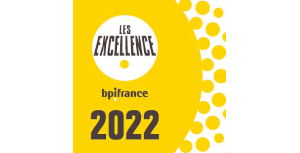The Enlarged Board of Appeal’s decision in G 1/24 of 18 June 2025 has brought long-awaited clarification to a critical area of European patent law: the interpretative role of the description and drawings in assessing the patentability of an invention. While this has been welcomed as a step towards harmonisation, a closer examination reveals a more complex jurisprudential and institutional recalibration. This article argues that while G 1/24 resolves long-standing uncertainties, it also reflects a deeper shift in the institutional logic of European patent law—from formalism to judicially driven harmonization.
Background and Questions Referred
Decision G 1/24 arose from interlocutory decision T 0439/22 of Technical Board of Appeal 3.2.01, which concerned a European patent held by Philip Morris Products S.A. relating to a heated aerosol-generating article. A central feature of claim 1 was the expression “gathered sheet”. The opponent, Yunnan Tobacco International Co., Ltd., argued that interpreting this term in light of the description broadened its scope to the point of destroying novelty over prior art document D1.
The Board of Appeal observed diverging case law on whether the description and drawings may (or must) be used to interpret claims in the context of assessing novelty and inventive step. This divergence prompted the referral of three questions of law to the Enlarged Board of Appeal:
- Question 1: Is Article 69(1), second sentence, EPC and Article 1 of the Protocol on the Interpretation of Article 69 EPC to be applied to the interpretation of patent claims when assessing the patentability of an invention under Articles 52 to 57 EPC?
- Question 2: May the description and figures be consulted when interpreting the claims to assess patentability and, if so, may this be done generally or only if the person skilled in the art finds a claim to be unclear or ambiguous when read in isolation?
- Question 3: May a definition or similar information on a term used in the claims which is explicitly given in the description be disregarded when interpreting the claims to assess patentability and, if so, under what conditions?
The Enlarged Board ultimately found Question 3 inadmissible, as it was encompassed within Question 2. However, it fully addressed Questions 1 and 2, setting the stage for significant doctrinal clarification. More particularly, the Enlarged Board ordered that: “The claims are the starting point and the basis for assessing the patentability of an invention under Articles 52 to 57 EPC. The description and drawings shall always be consulted to interpret the claims when assessing the patentability of an invention under Articles 52 to 57 EPC, and not only if the person skilled in the art finds a claim to be unclear or ambiguous when read in isolation”.
However, the significance of this order extends beyond the present case. It marks a realignment in EPO practice, revisiting foundational assumptions about the role of legal sources and interpretation principles.
The remainder of this article explores G 1/24 through three interconnected lenses: the absence of a clear legal basis in the EPC for claim interpretation in patentability assessments; the harmonisation imperative vis-à-vis national courts and the Unified Patent Court (UPC); and the effective abandonment of the “primacy of the claims” doctrine in favour of a holistic interpretive approach.
The Missing Legal Basis for Claim Interpretation under the EPC
At the core of G 1/24 lies a striking admission: the European Patent Convention (EPC) does not provide a satisfactory legal basis for claim interpretation when assessing patentability under Articles 52 to 57 EPC. The referring Board of Appeal in T 0439/22 had noted divergent case law, some decisions grounding interpretation in Article 69 EPC and the Protocol, others in Article 84 EPC, and many omitting any legal basis at all. The Enlarged Board states: “The Enlarged Board considers that neither Article 69 EPC and Article 1 of the Protocol, nor Article 84 EPC are entirely satisfactory as a basis for claim interpretation when assessing patentability” (G 1/24, Point 6).
Article 69 EPC, in conjunction with its Protocol, is traditionally associated with national infringement proceedings, not EPO examination or opposition. Its positioning in Chapter III of the EPC, titled “Effects of the European patent and the European patent application”, supports this reading. On the other hand, Article 84 EPC merely sets out formal requirements for claims, offering no interpretive guidance: “It only sets out an instruction to the drafter of what needs to be in the claims, and an instruction to the EPO to determine whether the claims meet that purpose” (G 1/24, Point 8).
This legal vacuum is not resolved through codification, but by affirming jurisprudential practice. The Enlarged Board justifies its conclusion by drawing on the accumulated case law, despite its inconsistencies, thereby recognising judicial practice as an autonomous source of law. In doing so, the Enlarged Board effectively confirms that European patent law is not only statute-driven but also judge-made—blurring lines between interpretation and legislation.
Judicial Harmonisation and Institutional Alignment
The jurisprudential recalibration noted above is not occurring in isolation; it reflects a broader move toward systemic alignment among European patent institutions. In G 1/24, the Enlarged Board does more than settle a doctrinal dispute. It realigns the EPO’s internal interpretive practice with that of national courts and the UPC. The Enlarged Board explicitly rejects the case law that limited the role of the description and drawings to situations of claim ambiguity, calling such a practice: “...contrary to the wording, and hence the principles, of Article 69 EPC. It is also contrary to the practice of the national courts of the EPC states and to the practice of the UPC” (G 1/24, Point 15).
The Enlarged Board underscores the need for coherence: “The Enlarged Board finds it a most unattractive proposition that the EPO deliberately adopt a contrary practice to that of the tribunals that are downstream of its patents” (G 1/24, Point 16).
In this regard, the UPC Court of Appeal’s decision in NanoString Technologies v 10x Genomics is cited with approval (UPC_CoA_335/2023, as quoted in G 1/24, Point 19). The UPC in that case emphasized the necessity of reading claims in light of the whole disclosure, even absent ambiguity. This demonstrates an emergent model of jurisprudential coordination, even in the absence of hierarchical control, across European patent institutions.
From Claim Primacy to Contextual Interpretation
G 1/24 also signals a doctrinal shift away from the principle of “primacy of the claims”. The referring decision T 0439/22 made this tension explicit, contrasting approaches that interpret claims on their own merits with those that rely on the broader context provided by the description.
The Enlarged Board resolves this tension: “The description and any drawings are always referred to when interpreting the claims, and not just in the case of unclarity or ambiguity” (G 1/24, Point 18). In doing so, it critiques the underlying logic of the opposing view: “The finding that the language of a claim is clear and unambiguous is an act of interpretation, not a preliminary stage to such an interpretative act” (G 1/24, Point 17).
This amounts to a repudiation of the two-stage approach—first assessing clarity, then consulting the description only if needed. Instead, the decision endorses a unified interpretive process.
Conclusion
Decision G 1/24 marks a pivotal moment in European patent jurisprudence. It fills a doctrinal gap not by legislative reform, but by leveraging the authority of consistent judicial practice. It affirms a vision of the EPO not as an isolated bureaucracy but as an institution embedded in a broader European legal order. Finally, it redefines claim interpretation as a necessarily contextual exercise, not solely a textual exercise. In doing so, G 1/24 brings long-needed coherence, but it also opens new questions about the boundaries of judicial law-making in the patent system. Does this trend signal a legitimate evolution of administrative patent law, or does it stretch the boundaries of the Enlarged Board’s mandate?













